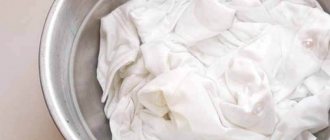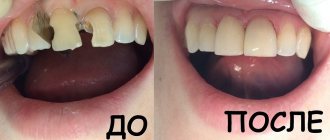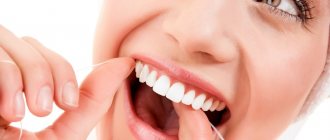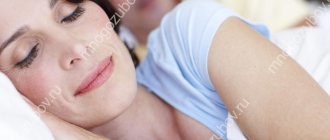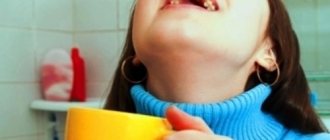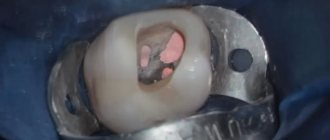blue for linen in stock. This is a powder for quickly enhancing the color of white or blue bedding and clothing made from natural fabrics. Currently, there are many powders that contain bleaches and various color additives for additional color saturation. But nevertheless, blue remains the most accessible substance, which gives fabrics not only freshness and newness, but also the desired shade if the blue substance is used as a dye.
Blue is most often starch, the composition of which is combined with blue mineral paint, mainly ultramarine, blue aniline dyes, indigo carmine, Paris blue or Prussian blue. Household blue is available in liquid, paste or powder form and is divided into two types: soluble and insoluble. Dyes that are highly soluble in water guarantee more uniform toning, coloring and saturation. Insoluble ones are much cheaper and are mainly suitable for refreshing linen made from natural fabrics. You can buy fabric blue in any store in the household chemicals department.
How to treat the research results?
Director of the Institute of Cluster Oncology of Sechenov University and Academician of the Russian Academy of Sciences Igor Reshetov believes that methylene blue has interesting potential. Perhaps it will have its application in the treatment of acute respiratory infections, for example, at the start of the disease. But before we can confidently talk about any antiviral effects of the drug, we need to conduct a new full-scale study on a much larger cohort of people.
About the expert: Igor Reshetov - Doctor of Medical Sciences, Director of the Institute of Cluster Oncology named after L.L. Levshin Sechenov University. Academician of the Russian Academy of Sciences.
“Apparently, this drug really has a universal mechanism for killing viruses - not only SARS-CoV-2, but also influenza viruses and other respiratory pathogens. But right now we simply have no right to talk about any miraculous effect of methylene blue - so far only the first tests have been made. If we draw a parallel with classical medical research, this is only the first phase. We really want to believe that we have recorded some positive result and that we have not harmed any of our patients. Actually, this is how we should treat this experience - and under no circumstances should we say that we have proven something. We still have many questions about the mechanism of action of the drug. Fundamental research needs to be continued, and it may take a year or two. Everything will depend on funding.”
Scientists have already applied for a grant. If they win, they plan to spend the money received on organizing a joint study with the Research Institute of Medical Primatology in the city of Sochi, where they will further study the effect of the blue dye on viruses and the immune system in primates.
However, Russian scientists are not the only ones who believe in the antiviral potential of methylene blue. Studies that study the mechanism of its work against coronavirus and other respiratory pathogens are now being conducted all over the world: Iran, Germany, Canada, and the USA.
By the way, one of the impressive observations was made not so long ago in France. There, quite unexpectedly, the preventive antiviral effect of methylene blue was discovered. Since the outbreak of the COVID-19 epidemic in Strasbourg, 2.5 thousand French patients who received methylene blue during cancer treatment have been monitored. Despite the fact that the families of some of these people experienced outbreaks of coronavirus infection, none of the 2.5 thousand cancer patients ever fell ill.
The editors of RBC Trends do not recommend taking a medical solution of methylene blue on your own for the treatment or prevention of COVID-19. To date, no therapeutic or prophylactic dose of the drug has been established for the treatment of viral infections. There is also no precise data on possible side effects. All studies to date are experimental in nature.
Subscribe to the RBC Trends Telegram channel and stay up to date with current trends and forecasts about the future of technology, economics, education and innovation.
Coloring
To stain with blue you need:
- Wash the item that needs to be dyed and rinse the powder until clear water.
- Dilute the blue according to the instructions. There should be no clumps of coloring matter in the water; it should be of a uniform color.
- Fill the bath with water for dyeing.
- Place the item in the bathroom. It is important that the fabric is evenly spread out (twisting, folding and bending may result in uneven dyeing - this is why it is recommended to dye in the bathtub and not in a basin or other container). The water should completely cover the item being painted. To lightly turn the linen blue, it takes a few minutes, to dye it – from 1 hour. For jeans, 2 hours is usually enough.
- Dry the fabric in a straightened state - the color may change in folds and creases.
What is Methylene Blue
A synthetic antiseptic from the group of chemical indicators, used in several areas of human life: in medicine, water treatment, analytical chemistry, and even breeding aquarium fish. This is methylene blue (lat. Methylenum coeruleum). Analogues of the drug are other antiseptics - Chlorhexidine, Resorcinol, Furacilin, Methyl Violet, Citral, Borax. The substance has other names that are equivalent to each other:
- methyl or methylene blue;
- methylene blue;
- methylene blue.
Compound
Methylene blue is a dark green crystal with a bronze sheen. The main active ingredient is methylthioninium chloride (from the Latin Methylthioninium chloride), and the additional one is ethanol. There are several pharmaceutical forms of release of the drug:
- powder from which an aqueous solution of methylene blue is prepared;
- 1% alcohol solution in glass bottles of 10-15 ml;
- 1% solution diluted with 25% glucose solution, in ampoules of 20 or 50 ml.
Indications for use
Methylene blue was originally conceived for dyeing fabrics such as wool, cotton and silk. But soon this substance found its application in other areas of human activity. It continued to be used as a dye, only to study the morphological characteristics of microorganisms in smears. The pharmacodynamics of the drug even includes antidote properties to hydrogen sulfide, cyanide compounds and carbon monoxide. Blue is also used in medicine to diagnose kidney function. This is due to the pharmacokinetics of the drug - it colors the urine blue.
There is some evidence that medical blue as a medicine is effective in Alzheimer's disease. The substance is also used in the following cases:
- as an antiseptic for washing affected cavities with cystitis and urethritis;
- from the throat, especially with purulent sore throat;
- as an intravenous antidote for cyanide poisoning;
- in case of drug-induced methemoglobinemia;
- externally for burns, pyoderma, felon, folliculitis and other skin diseases;
- in dentistry for purulent-inflammatory diseases, for example, stomatitis, gingivitis, caries and periodontitis;
- in aquarium husbandry to improve acid metabolism in fish tissues, prepare antibacterial food, process fry and caviar.
Contraindications
Methylene blue has few contraindications. The main one is the body's hypersensitivity to the components of the drug. The substance should not be used to treat children under 1 year of age. During pregnancy, methylene blue is prescribed only for strict indications. During lactation, the possibility of using the drug is also discussed with your doctor. It is not recommended to treat mucous membranes with the solution. It cannot be administered subcutaneously or intrathecally.
Do I need to rub, twist, iron?
Before making the tulle snow-white, you need to prepare for this process according to all the rules:
- shake out the cloth to remove dust;
- stop using chlorine-containing products;
- temperature for washing tulle - no higher than 40°C (hot water will ruin the fabric, and cold water will not cope with dirt);
- the best detergent for washing is liquid;
- if you use powder, it must first be dissolved;
- the fabric does not need to be rubbed;
- so that the curtains are without folds, they are not twisted;
- do not dry the tulle in the sun - you will get a yellow color;
- To iron the tulle after washing, you don’t need to take an iron: you just need to hang wet curtains on the curtain rod.
Important
- Blue is needed for those who prefer simplified processing methods to a variety of toxic bleaching powders.
- A high-quality product does not stain containers or the skin of your hands.
- Blue is not a permanent dye. Each subsequent wash will wash out the color pigments, so re-blueing should be done from time to time.
- To obtain a good result, each item must be processed separately.
- Table salt added along with the blue when rinsing will help keep the blue color longer.
- To achieve the desired result, it is better to first practice on old things.
- Always read the instructions for use of the dye, because depending on the manufacturer, release form and composition, dyeing may have different results.
- Blue blue, which contains starch, should be boiled after dilution and then strained.
- Do not try to replace the bluing with a blue item of clothing when washing white clothes in the machine, as this may lead to unpredictable results.
- The chemical should be stored in a tightly closed container out of the reach of children.
Blue is a fairly cheap substance that can replace many expensive powders with a whitening effect. It is also an indispensable product for adding freshness to linen and richness to blue and blue clothes. Also, such a simple, popular substance as blueing can serve as a source of inspiration for creating unusual shades or patterns when dyeing.
Starch: the final stage
The last step left is to starch the tulle at home. This will give the sheer curtains shape and extra shine.
- Dissolve 250 g of dry starch in a bowl of water (about 10 liters), mix well until smooth.
- Soak the washed curtains in the solution for five hours.
- Take it out of the water.
- Don't squeeze, let it drain.
There are many ways to quickly bleach tulle at home. If you are not satisfied with one method, try another. Do not forget and do not be lazy to wash the tulle, as dust collects in it, causing respiratory diseases. The health of all family members depends on the cleanliness of your apartment.
Washing methods
The curtains can be washed either in a machine or by hand. Remember that jewelry in the form of muslin, ribbons, and fringe do not like automatic washing and can be hopelessly damaged. But dense fabrics, curtains made of polyester and viscose feel good in the drum. Hand washing is more gentle, but old tulle curtains cannot be tidied up this way.
Manual
It would seem that this is the most basic way: pour water, throw in a handful of powder and, with physical effort, wash the item. But not everything is so simple, since you need to wash tulle wisely. To achieve the result, the following actions are required.
- Soak. Make a saline solution, add any detergent and soak the tulle in the liquid. If it is not too dirty, then two to three hours will be enough, otherwise you can leave it overnight. Before washing, you need to rinse the curtains in several waters.
- Wash. Wash in warm water using a suitable detergent. If you take powder, first dissolve it in water. But to brighten the color, you can pour in a little vinegar. Lather the water well, then add the tulle there. Foam is the product that perfectly washes delicate fabrics. Remember the curtains in the water. No need to squeeze or rub too hard - this is unnecessary.
- Rinse . Pour clean water. Add some blue. Dip the curtains and rinse them gently. Thanks to the blue, you can wash the tulle from grayness - the curtains will acquire a barely noticeable shimmer and freshness, as if you had just bought them.
Machine
Activator-type machines are not suitable for such things, so it is best to wash tulle in an automatic washing machine. To prevent the curtains from being damaged, you need to use a special bag, which is what it’s called: for washing delicate items. If you don't have one, fold the tulle into a clean white pillowcase. What's next? Follow the following five-step procedure.
- Place the tulle in the drum of the machine.
- Pour gentle detergent and tulle bleach into the special compartments (it does not contain chlorine).
- Select the “delicate”, “gentle”, “neat” mode (each machine has something similar). The cycle should be the smallest that the programs offer.
- Turn on the “extra rinse” option.
- Turn off spin or select the lowest speed available.
If you do everything correctly, then at the end of the wash you will get clean and fresh curtains without making any special efforts - the machine will do everything for you.
Compound
What is the composition of blue for linen? It is a sodium aluminosilicate containing sulfur and sodium sulfate. In the USSR, grade 1 and grade 2 products were sold, which differed in intensity and shade. The blue should dissolve easily in water. Because of its lightness, it does not stay at the bottom for long. The composition of the Soviet product excluded the presence of organic dyes, Prussian blue and soot.
Methylene blue against SARS-CoV-2: how did the idea come about?
The idea was born at the Institute of Cluster Oncology named after L.L. Levshin on the basis of the University Clinical Hospital No. 1 of Sechenov University.
At the height of the coronavirus epidemic, like many other medical institutions in Moscow, the institute was repurposed as a Covid hospital. At that time, there was already a list of recommended medications and a treatment protocol approved by the Russian Ministry of Health, but Sechenov’s oncologists still thought about finding alternative treatment methods.
About the expert: Artem Shiryaev - Candidate of Medical Sciences, surgeon, oncologist at the Institute of Cluster Oncology named after L.L. Levshin Sechenov University.
“Since we, together with physicists from the Institute of General Physics of the Russian Academy of Sciences, have long and successfully used photodynamic methods to treat cancer patients, we immediately remembered the well-known photosensitizer - methylene blue. It was just being developed by us as part of a project for photodynamic therapy of brain tumors. Works by Russian and foreign scientists have already been published confirming the ability of blue dye to destroy some pathogenic viruses in blood plasma when exposed to red light. And while we were thinking about how to apply this experience to the story of COVID-19, a publication by Chinese scientists came out. The article described the successful experience of inactivating the SARS-CoV-2 virus in blood plasma in vitro (that is, in a test tube) using light irradiation at various dosages of methylene blue. The virus died in a matter of minutes when exposed to methylene blue and in a matter of seconds when additionally irradiated with red light. This work helped us develop our treatment protocol. The first volunteers to take methylene blue were: myself, Academician of the Russian Academy of Sciences and Director of the Institute of Cluster Oncology Igor Reshetov, as well as Professor of the Institute of General Physics of the Russian Academy of Sciences Viktor Loschenov. His laboratory is developing photodynamic therapy equipment for us.”
According to oncologist surgeon Shiryaev, there was no fear of taking methylene blue - the drug has long proven its safety. In addition, scientists needed to accurately calculate the dose capable of killing the virus; understand how this substance will be eliminated from the body; and design a laser installation for photodynamic therapy.
About the expert: Viktor Loschenov - Doctor of Physical and Mathematical Sciences, Professor at the Institute of General Physics named after. A.M. Prokhorov RAS.
“When we started this work, the pandemic was in full swing. Everyone in Moscow was in self-isolation. I couldn't work in my laboratory, so I did all the preparatory research at home. I studied the pharmacokinetics of methylene blue on myself and volunteers and in parallel developed the irradiator. Subsequently, laser installations with a light power ten times higher than existing analogues were created by graduate students of the Institute of General Physics. They installed 3D printers in their dorm, purchased components, and used them to “print” four irradiators.”
After both the equipment and the treatment protocol were ready, the scientists submitted an application to the independent local ethics committee of the First Moscow State Medical University named after I.M. Sechenov Ministry of Health of Russia.
The study was approved on April 24, 2021, and the very next day the experimental treatment with methylene blue was offered to be tested on patients with coronavirus infection. Oddly enough, many readily agreed.
ADVIСE
When turning laundry 1 liter. You can add 4 tbsp of blue water. spoons of vodka and 1 teaspoon of turpentine (6 oil will become 6 oil).
When washing cream-colored lace and tulle curtains, instead of bluing, it is better to use an infusion of tea or coffee filtered through a thin fabric.
Openwork curtains not only add individuality and comfort to the home, but also show the taste of the housewife. Sometimes women refuse such beauty, replacing tulle with blinds. They explain this by their busyness, since bleaching tulle at home is troublesome. But in reality, this is not a problem at all.
Tulle is sewn from various fabrics, but always very soft and airy. Silk, viscose, polyester, nylon, cotton and even wool are suitable for such delicate work. Wool is woven into an openwork, thin veil.
Tulle made of nylon and polyester is considered the most durable. As for care, artificial fabrics are the best to wash, but this must be done very carefully - if the temperature is not maintained, the fabric turns yellow. Only delicate mode or hand washing will help.
Choice
Painting with this product should only be carried out on suitable materials. It must be taken into account that:
- Blue for laundry must be water soluble. Then you will get a uniform color - insoluble ones make streaks when used in a concentrated manner.
- Powder and liquid should be diluted with water until dissolved before use.
- The substance is used for washing and rinsing. If you need coloring, it is advisable to choose a special product.
- The product is used to dye white materials and refresh blue fabrics. Dark colors do not change, but other light colors may produce unexpected results. The substance is typically used in updating jeans.
- Linen bluing can dye natural fabrics.
Using the washing machine
If allowed, bluing for washing clothes can be used in the washing machine. You can also do coloring. The work is performed in the following sequence:
- You should check whether there are any dense lumps in the liquid dye, and the powdered dye should be diluted with water. Grains of sand can ruin clothes and leave bright stains on them.
- The product is added to the drum of the machine. If the instructions say to add soda or salt, then do so. This is required to fix the color.
- You need to choose an intensive wash if the fabric is thick. And the temperature is 90-95 degrees. The cycle is long.
- Do not use washing powders, rinse aids and other products.
- After washing, jeans should be placed in a basin to soak in vinegar, which will fix the color.
- To prevent other clothes from getting dirty, the car is turned on at idle speed and then wiped from the inside. It is advisable to add a small amount of bleach to the powder compartment.
When using blue, you need to consider that:
- A quality product will not stain your hands or bathtub. If traces of it remain, there is a possibility of damage to the item.
- Blue is not considered a permanent dye - it fades with each wash, so repeated procedures are required. For lasting results, you need to use special paints for materials.
Each item needs to be processed separately if you want to get an excellent result. It is necessary to adhere to the rules of the procedure, observing the time period for painting.
The dyes have good resistance to external factors, so you can safely wash them. But you should not prolong the procedure or change the temperature. It is advisable to wash the item by hand with water at 40 degrees. Thus, blue can be used to color things. It is usually used for jeans. Even an old thing takes on a new look.
Openwork curtains not only add individuality and comfort to the home, but also show the taste of the housewife. Sometimes women refuse such beauty, replacing tulle with blinds. They explain this by their busyness, since bleaching tulle at home is troublesome. But in reality, this is not a problem at all.
Tulle is sewn from various fabrics, but always very soft and airy. Silk, viscose, polyester, nylon, cotton and even wool are suitable for such delicate work. Wool is woven into an openwork, thin veil.
Caring for painted products
After the jeans have acquired the desired look, the duration of their use depends on proper care.
Before washing, be sure to fasten all zippers and buttons and turn the product inside out.
For jeans, hand washing in warm water is recommended. Moreover, you cannot sprinkle washing powder directly on your jeans; it must be dissolved in water in advance. Also, do not use powder containing bleaching components.
To prevent the paint from washing out for a long time, you can use laundry soap instead of powder when washing.
If hand washing is not possible, you can wash the clothes in the washing machine on a delicate cycle.
If you follow simple care rules, your jeans will delight you with their appearance for a long time.
blue for linen in stock. This is a powder for quickly enhancing the color of white or blue bedding and clothing made from natural fabrics. Currently, there are many powders that contain bleaches and various color additives for additional color saturation. But nevertheless, blue remains the most accessible substance, which gives fabrics not only freshness and newness, but also the desired shade if the blue substance is used as a dye.
Blue is most often starch, the composition of which is combined with blue mineral paint, mainly ultramarine, blue aniline dyes, indigo carmine, Paris blue or Prussian blue. Household blue is available in liquid, paste or powder form and is divided into two types: soluble and insoluble. Dyes that are highly soluble in water guarantee more uniform toning, coloring and saturation. Insoluble ones are much cheaper and are mainly suitable for refreshing linen made from natural fabrics. You can buy fabric blue in any store in the household chemicals department.
Coloring
To stain with blue you need:
- Wash the item that needs to be dyed and rinse the powder until clear water.
- Dilute the blue according to the instructions. There should be no clumps of coloring matter in the water; it should be of a uniform color.
- Fill the bath with water for dyeing.
- Place the item in the bathroom. It is important that the fabric is evenly spread out (twisting, folding and bending may result in uneven dyeing - this is why it is recommended to dye in the bathtub and not in a basin or other container). The water should completely cover the item being painted. To lightly turn the linen blue, it takes a few minutes, to dye it – from 1 hour. For jeans, 2 hours is usually enough.
- Dry the fabric in a straightened state - the color may change in folds and creases.
How to dye jeans
Before choosing a method to update the color, you need to decide how to dye your jeans and what products to use.
To update your jeans at home, you can use the following products:
- The most common painting option is blue. This method is very simple, but the result will not last long.
- So-called boiled jeans can be obtained using potassium permanganate. In this case, the result depends on skill and experience, since the process is quite complex.
- You can purchase ready-made aniline dyes. By following the instructions on the package, you can quickly get the desired effect.
- To obtain a more durable result, acrylic paints are suitable.
- Jeans can also be dyed in the washing machine using powder dyes. The painting process is simple, but there is a small selection of shades available.
Blue
Affordable and inexpensive painting options include bluing. But, using this product, it will not be possible to radically change the color of the product; you can only make it blue.
Blue can be purchased at any hardware store.
How to dye jeans blue:
- Dilute the blue in water whose temperature is less than 30 degrees. The brighter the color you want, the more product you need to use. To get a lasting shade, you can add 2 tablespoons of salt to the solution.
- Place the jeans in the solution.
- Leave them for a couple of hours. To ensure uniform painting, the product must be turned over periodically.
- Rinse your pants in cold water.
- To fix the color, rinse them in a weak vinegar solution.
The resulting result will begin to wash off immediately after the first wash, so this method of painting cannot be called optimal.
Powder painting
Using powdered dye and a washing machine, you can dye your jeans black. To avoid unexpected results, do not add washing powder and fabric softener to the washing machine. Jeans need to be washed first.
How to dye jeans in the washing machine:
- turn the product inside out;
- place the jeans in the washing machine;
- pour coloring powder into the drum;
- set the washing temperature specified on the product label;
- start the standard washing program;
- take out the painted item and rinse in cool water;
- rinse your jeans in a vinegar solution;
- wash them in a washing machine with washing powder;
- dry.
The result of dyeing is a durable, bright color. You should not worry about the washing machine - the use of dye will not affect its functionality in any way. The maximum that can happen is painting the rubber seals. But this problem can easily be solved by wiping them with a damp cloth.
Acrylic paints
Using acrylic paints, you can apply any design to the fabric, which will help hide problem areas and make the item unique and inimitable.
But this method is short-lived, since after several washes the color of the paint will begin to fade, and may even begin to fade. Therefore, this method is not suitable for everyday items that are often washed.
Aniline dyes
Among textile dyes, aniline dyes are the most popular. This is due to its ease of use and lasting results.
To correctly calculate the dosage, before starting work you need to read the instructions and recommendations on the packaging.
To dye jeans, you need to boil them in a dye mixture with salt, stirring occasionally. Then rinse in vinegar solution and dry.
Selection of household chemicals: 3 options
In hardware stores you can buy products created specifically for fabrics that require careful handling. They are safe and do their job quite well. They are good because they contain bleach and even “starch.”
Three types of “washing agents” allow you to restore the whiteness of tulle.
- The simplest powder. Both “automatic” and “manual” will do. They can be used if you need to bleach nylon tulle, or when at home there is a struggle for the freshness of organza or cotton curtains.
- Baby powder or gel. They contain special bleaching elements that protect the fabric from thread disintegration.
- Shampoo for fabrics. Prevents deformation of delicate products, cleans efficiently, but carefully.
